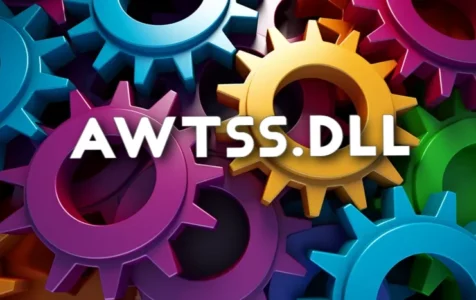If your computer is acting strangely, opening pages you didn’t initiate, or popping up ads out of nowhere, it’s possible that a particular file called awtss.dll could be involved. So what exactly is this awtss.dll file?
Originally, dynamic link library (DLL) files are an essential part of the Windows operating system. They contain functions that other programs can call upon to perform certain actions. However, not all DLL files are created equally—some may have a dark side.
Awtss.dll specifically is a file that’s come to the attention of many because most antivirus programs recognize it as malware, classifying it as a form of Trojan, known as Trojan.WinFixer.
A Browser Helper Object (BHO) by nature, awtss.dll typically hooks into your web browser and can change settings such as the default search engine and homepage without your consent. It runs automatically and can monitor your browsing habits, which could lead to privacy concerns. Located typically in the C:\Windows\System32 folder, the file doesn’t hold information about its author and isn’t a part of Windows system files, which raises red flags.
Expert Tip: For smoother PC performance, consider using a PC optimization tool. It handles junk files, incorrect settings, and harmful apps. Make sure it's right for your system, and always check the EULA and Privacy Policy.
Special offer. About Outbyte, uninstall instructions, EULA, Privacy Policy.
As with many DLLs of its kind, the sneaky aspect is its capacity for malice under the guise of legitimacy. BHOs like awtss.dll are often employed by adware and spyware. The actual creator is WinSoftware, Ltd, known for aggressive promotion of their WinFixer 2006 application, which itself is considered “sleazy” and deceptive.
Is Awtss.dll Safe to Run? Can It Be a Virus or Malware?
To answer simply, no, awtss.dll is not safe to run. Considering the consensus from antivirus programs and security experts, it would be wise to treat this file with suspicion. The behaviors associated with awtss.dll, such as ad pop-ups, personal information harvesting, and unauthorized modifications to systems, all align it more with nefarious activities than any productive purpose. It’s often associated with various types of adware or malware campaigns.
How to Fix Awtss.dll-Related Issues?
If you find that awtss.dll is causing troubles on your computer, there are several steps you can take to remedy the situation:
1. Run a Virus Scan: Use a trusted antivirus tool to run a full system scan. A regular checkup can prevent a lot of headaches later on.
2. Restore Browser Settings: If awtss.dll has altered your browser settings, reset them to their original state. Each browser has its own method for restoration, so refer to your browser’s help resources.
3. Manual Deletion: If the antivirus software has identified awtss.dll but fails to remove it, you could try to delete it manually. However, this must be done cautiously—deleting system files can affect your computer’s performance. Make sure to back up data before proceeding.
4. Check Startup: Use tools like MSConfig to check if awtss.dll is set to run on startup. If so, disable it.
5. Safe Mode: Reboot your computer in Safe Mode and run the antivirus scan again. In Safe Mode, only the essential processes load, limiting the possibility of malware interfering with the removal process.
6. System Restore: If all else fails, performing a system restore to a point before you noticed the awtss.dll issue may resolve it.
Community Discussions
In forums and discussion groups online, many users share their experiences dealing with files like awtss.dll. The consensus within these talks is usually to eliminate the file due to its malicious nature. These discussions provide a goldmine of user-end strategies not only for removal but for prevention of future infections as well.
Conclusion
In summary, it’s crucial to be vigilant of files such as awtss.dll on your system. While DLL files are crucial to the operation of various applications within Windows, this particular file is identified by many experts as malicious and should be removed to maintain the integrity and security of your computer system.
